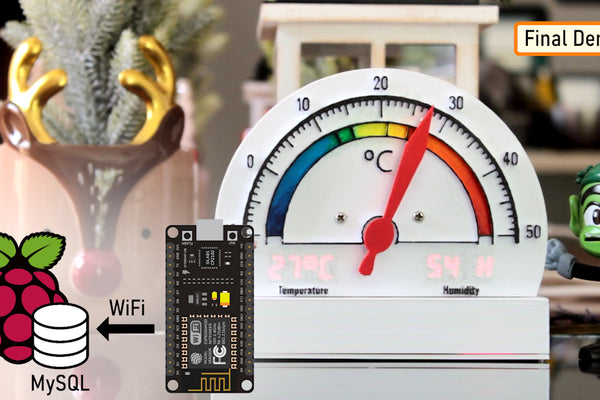
Make a connected analog thermometer
Are you looking to create your own indoor gauge thermometer using a NodeMCU and 3D printing technology? Look no further! This blog post will guide you through the process of building your very own thermometer to monitor the temperature in your home.
What materials do you need?
To get started on this project, you will need a NodeMCU development board, a DHT11 temperature and humidity sensor, a 0.96 inch OLED display, and access to a 3D printer. These materials will allow you to create a functional and accurate indoor gauge thermometer.

How does it work?
The NodeMCU development board is used to connect the DHT11 sensor and OLED display. The DHT11 sensor measures the temperature and humidity in the environment, while the OLED display shows the temperature reading in real-time. The NodeMCU board acts as the brain of the operation, processing the data from the sensor and displaying it on the screen.
Why build your own thermometer?
Building your own indoor gauge thermometer allows you to customize the design and functionality to suit your needs. You can choose the size and shape of the thermometer, as well as the type of display you prefer. Additionally, creating your own thermometer is a fun and educational project that can help you learn more about electronics and programming.
What are the benefits?
By building your own indoor gauge thermometer, you can have a better understanding of the temperature and humidity levels in your home. This can help you make informed decisions about heating and cooling, as well as monitor the indoor air quality. Additionally, creating your own thermometer is a cost-effective alternative to purchasing a pre-made device.
Overall, building your own indoor gauge thermometer is a rewarding and educational project that can enhance your understanding of electronics and programming. With the right materials and a little bit of time, you can create a functional and stylish thermometer to monitor the temperature in your home.

Leave a comment